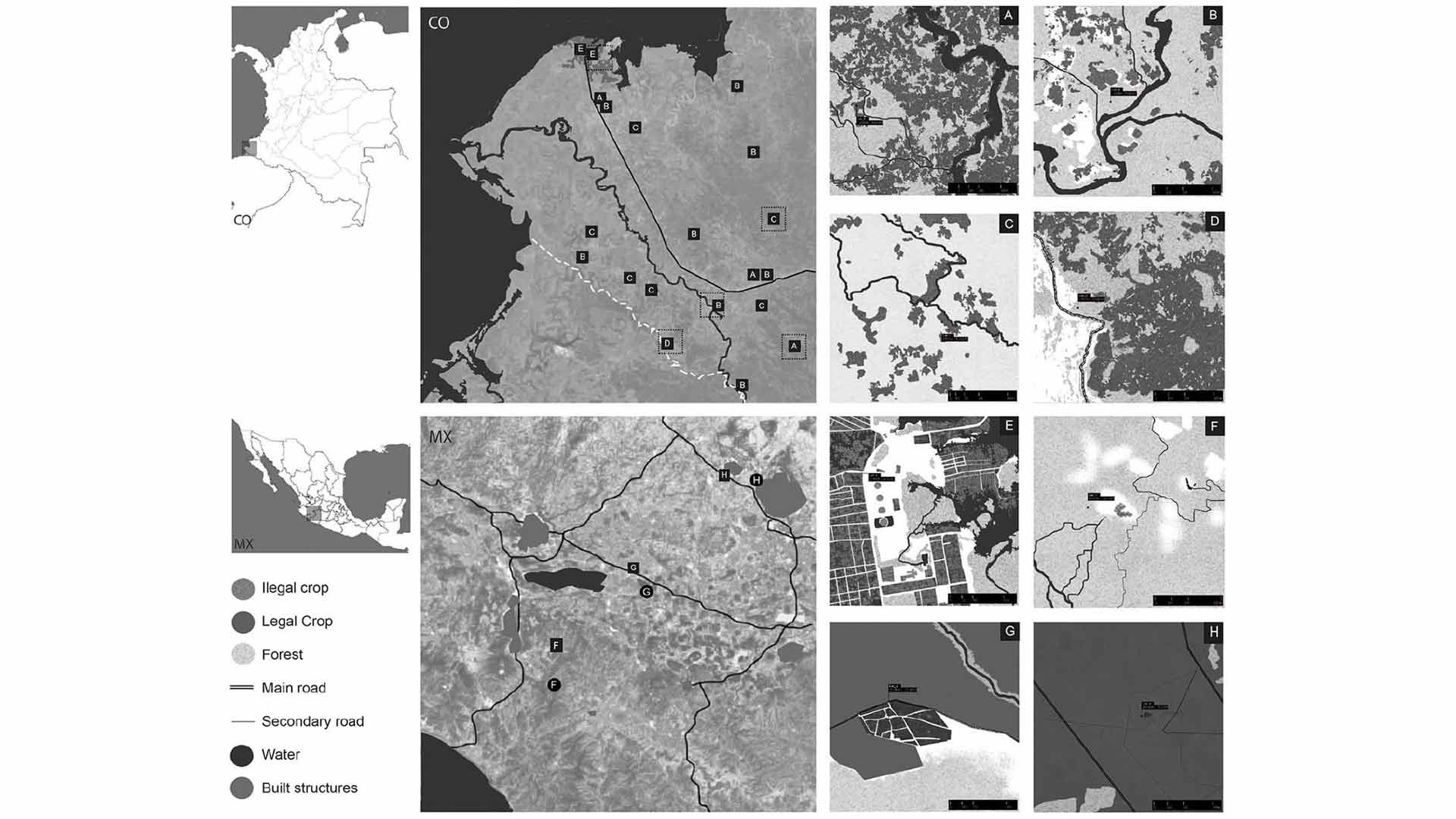Architectures, spaces, and territories of illicit drug trafficking in Colombia and Mexico (Artículo científico)
Architectures, spaces, and territories of illicit drug trafficking in Colombia and Mexico (Artículo científico)
Proyectos de investigación creación
Academia
This research applies an interdisciplinary approach to the bidirectional relationship between illicit drug trafficking activities (specifically, cocaine and opioid trafficking in Colombia and Mexico) and the architectures, spaces, and territories in which they are located. Certain spaces that determine or are determined by the actions of drug trafficking organizations are described, analyzed, and classified based on various methodologies and the use of academic, official, and press information. In addition, case studies are reconstructed using architectural and geographic representation mechanisms to exemplify and illustrate the main arguments. The paper examines the three stages of activity that constitute the illegal drug economy: production (involving the placement of crop fields and laboratories), distribution (which entails exploitation of mobility infrastructure), and cross-cutting activities in relation to drug trafficking support spaces. The research provides an articulated interpretation of the various drug trafficking activities from a spatial perspective, the characterization of spaces that are important to criminal organizations and to the performance of their activities, and insights into the spatial thinking strategies and tactics associated with drug trafficking.

